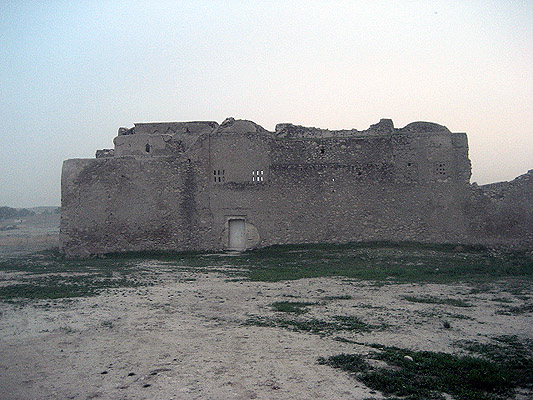
This was taken during my initial approach to the Dair Mar Elia monastery in 2008. The monastery is currently blocked
off by a chain link fence. All photos credited to Joe Costigan.
Local tradition says Dair Mar Elia (the Monastery of St. Elijah) dates back to the fourth century and is the oldest Christian monastery in Iraq. But other evidence indicates that the original monastery on this site was built about 571 CE , during the reign of the Persian King Hurmizd IV (Warda, Walsh). Therefore, it predates the founding of Islam by about one hundred years.
“Mar” in “Mar Elia” does not actually translate into English as “Saint”. It is an honorific title given to a monk. Mar Elia, who founded the monastery, was a student of Mar Orahim, who wrote the “Rule” for life in the monastery. Mar Elia was trained at the Mount Eztla monastery in what is now Turkey. (Bishabue)
The monastery and chapel originally belonged to the Holy Apostolic and Catholic Assyrian Church of the East. The Assyrian Church separated from the Western church in 431 in the wake of debates over the Nestorian heresy. The monastery passed to the possession of the Chaldean Catholic Church, which separated from the Assyrian Church in the late 1500s, and reestablished communion with the Roman Catholic Church.
For some time, the site was unoccupied for extended periods of time. The buildings of the original monastery have totally collapsed. Numerous mounds surround the compound of the monastery, showing that there are more ancient remains underground. The existing buildings above ground date back to the late 1500s.
In the 1600s, Hurmizd Alqushnaya, a native of Alqush, renovated the monastery, and it continued in active use until 1743, when Shah, a Kurdish leader, overran the monastery and killed all the monks. That marked the beginning of a genocidal campaign against the Assyrian Christians that lasted until 1790. (Walsh)
Recently, the Monastery of St. Elijah has fallen victim to the conflict in Iraq. With the monastery’s location only several miles from the northern city of Mosul, it has been occupied by several different military units. The monastery itself has suffered damage in the ways of soldier graffiti, bullets, and even an anti-tank missile. (Tom Craft adds, in 2003, I was within view of the monastery during the fire and subsequent explosions in the ammunition supply area, which I believe is what caused the damage described as an anti-tank round. I am an explosive ordnance disposal (EOD) technician and I was involved directly with the clean up of the thousands of unexploded ordnance (UXO) that were removed from the area.)
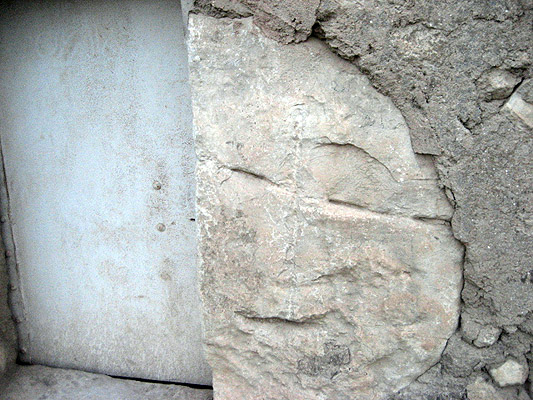
Located next to the front entrance (also, the only entrance), there is a Christian symbol, called a "Chi-Rho," carved into the right gatepost. My chaplain's assistant who accompanied me on my tour explained to me that the symbol dates back to the fourth century. It is a mixture of a "P" and an "X," by basically drawing the "P" with a crossbar through it. It was customary to abbreviate the name of a well-known person with the first two letters of their name. The first two letters of the word Christ in Greek are Chi, which resembles the "X" of the Latin alphabet, and Rho, which resembles a "P." In the picture, the cross is easily seen, and the curve of the "P" is basically made out by the indention in the upper right corner of the cross.
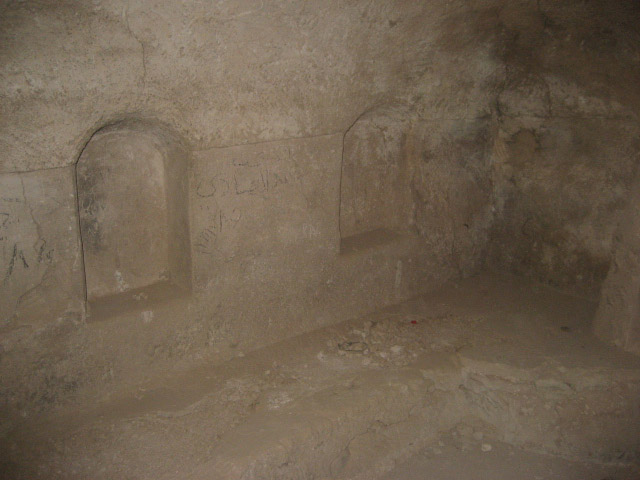
This is the entrance, or foyer. Monks are thought to have greeted visitors in this room, bringing them food, water, or any other necessities. There are two shelves that are cut into the wall, which would most likely hold candles or other items.
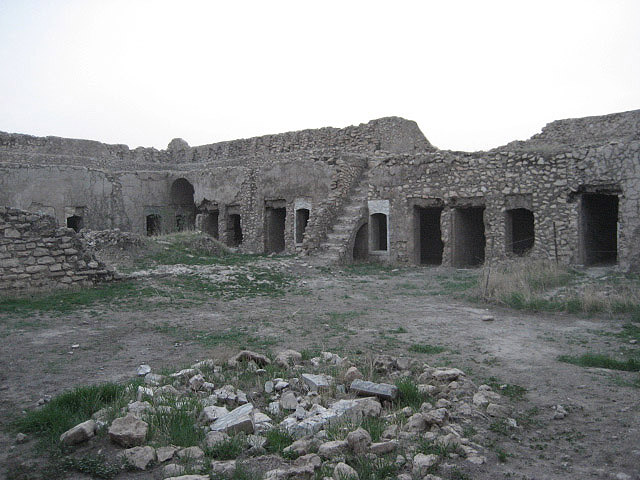
Here is a photo of what many believe to have been the monk's cells. Each room has room for a mattress, and a small area for personal things. Each cell has carvings in the wall, much like the entrance, that could hold candles or other personal belongings.
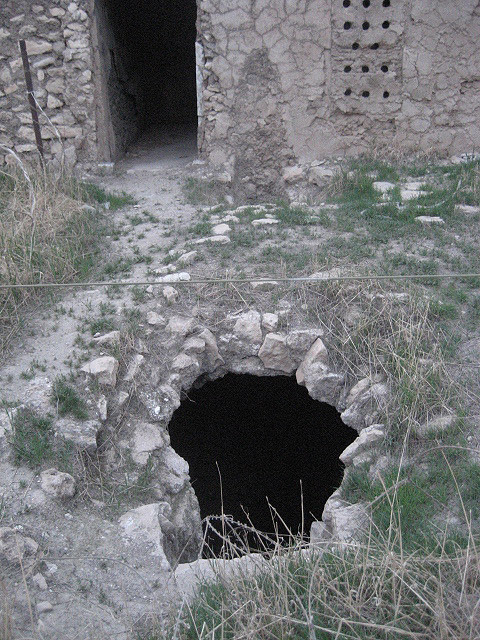
This is the cistern, or an underwater storage for water. It was located near the center of the monastery. Although not apparent in the picture, this cistern was about 20 feet deep, and had a lot of trash in it. The interior walls of the cistern had been blackened from the burning of diesel fuel (to break down the trash and sewage that the Iraqi army left behind). The room that can be seen in the photo also has blackened walls. This room was also the only one in the monastery with a window that had the little holes all throughout it. I inquired about those holes, but the chaplain's assistant did not know what they were for at the time, nor after he inquired to the other chaplains.
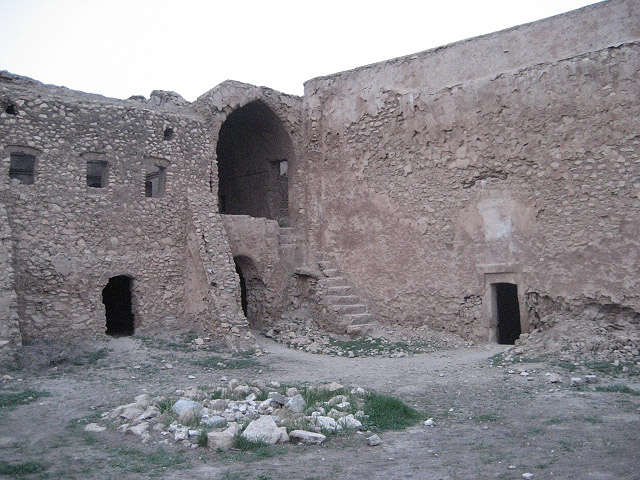
This photo was taken after spinning around 180 degrees or so when standing in front of the cistern. The 'large' building is the actual sanctuary. The center doorway, by the steps, leads back into the entrance/foyer. Up those stairs and to the left was a room that was believed to be the Scriptorum, or the room where monks would read and copy literature. With the three windows facing the west, and three more on the opposite side facing the east, this would easily have been the most lit up room (and largest) in the monastery. The room below the Scriptorum was very plain. No windows and no niches in the walls for candles, etc. I inquired about its purpose, but do not have anything about it in my notes.
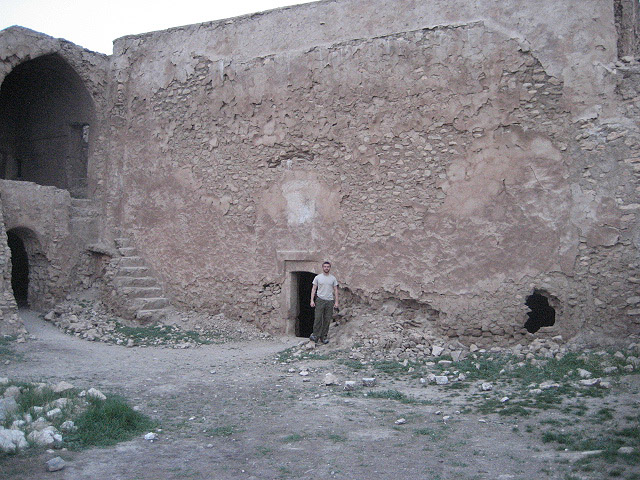
A photo of myself standing outside the tall sanctuary.
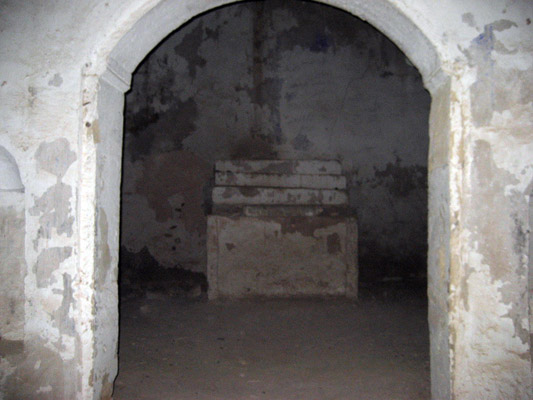
This is inside the sanctuary. This is the altar room. Supposedly, this is where the elders would worship. The chaplains assistant said that only senior religious leaders could go into the room with the altar. Whether it was true or not, I respected the old rule, and decided to take a picture standing in the doorway, and not inside.
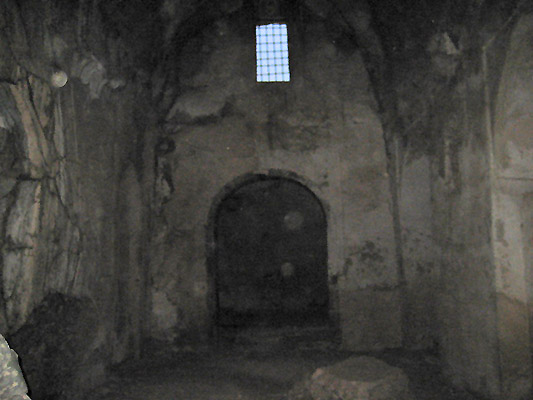
This picture is taken inside the sanctuary. The larger room is thought to have been for guests, but I am not entirely sure. There is one window in the sanctuary, near the top, facing the west.
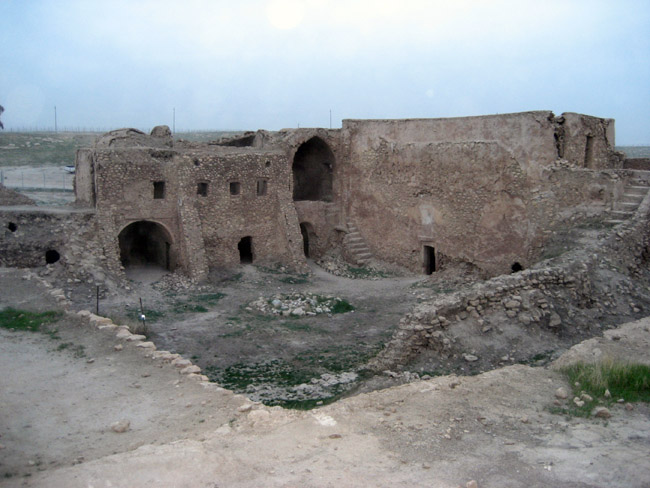
This photo was taken in the corner upstairs wall of the monastery. You can see the entrances to the scriptorum and the sanctuary. You can spot that lone window in the sanctuary on the 'big building' in the upper right of the photo. Also, the little hole at the middle of the photograph is not the cistern. The cistern would be off the front ledge a bit (can't be seen in this photo). The little hole on the left side of the photo went to a room that was believed to have been the kitchen. The hole would have been the smoke-hole for the hearth.
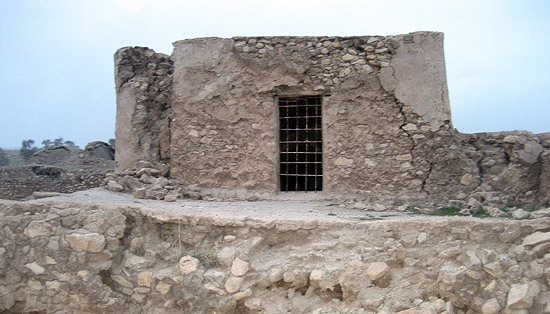
This is a close up picture of the lone window that would shine down into the sanctuary.
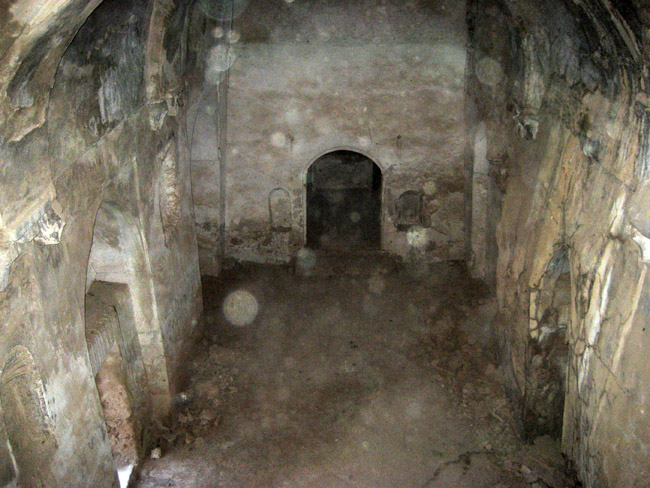
This is what taking a peek through the lone window into the sanctuary looks like. You can see the altar.
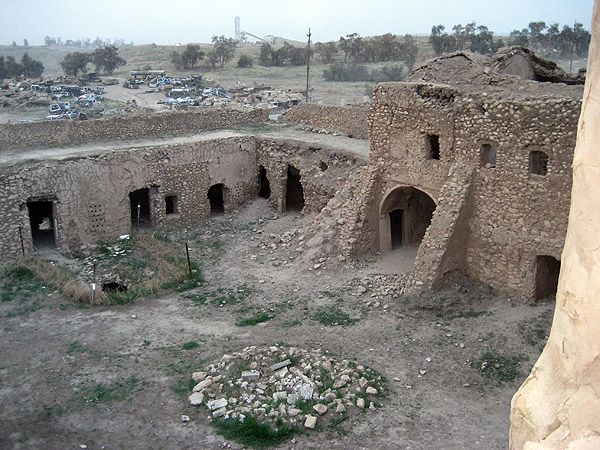
This picture is taken from in front of the lone window to the sanctuary, but looking a bit to the left. In this picture, you can see the kitchen, the cells/rooms for the monks, the cistern, and that one room with the window with the holes in it. Also noticeable in this picture is the junk yard in the background. I am pleased that I captured that in this photo, because a lot of articles speak of this car graveyard, but I did not see any pictures of it. If you zoom in, you can see some old tanks, busses, cars, and other vehicles.
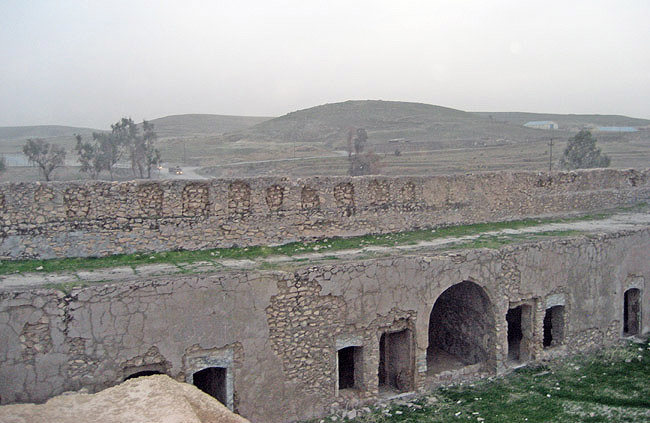
This photo was taken when looking more to the left than the previous image. You can see the rolling hills, which are usually flush with green grass, but this was just after winter.
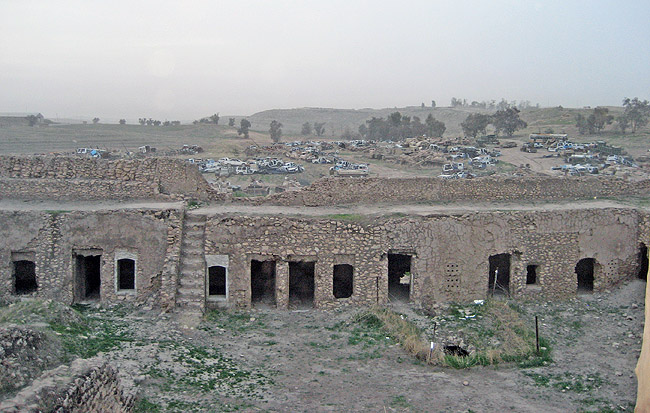
Another photo of the monastery, with the junk yard in the background.
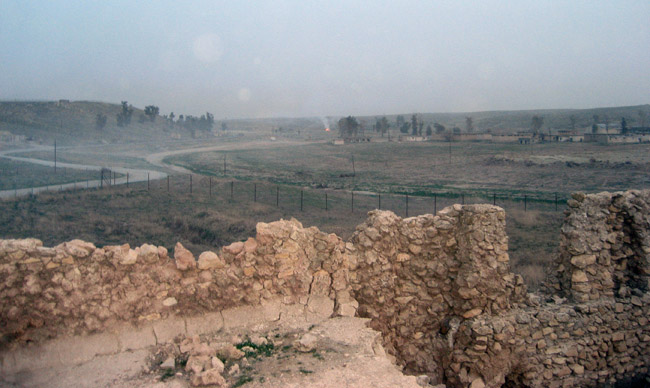
A shot of the countryside with a large fire in the distance.
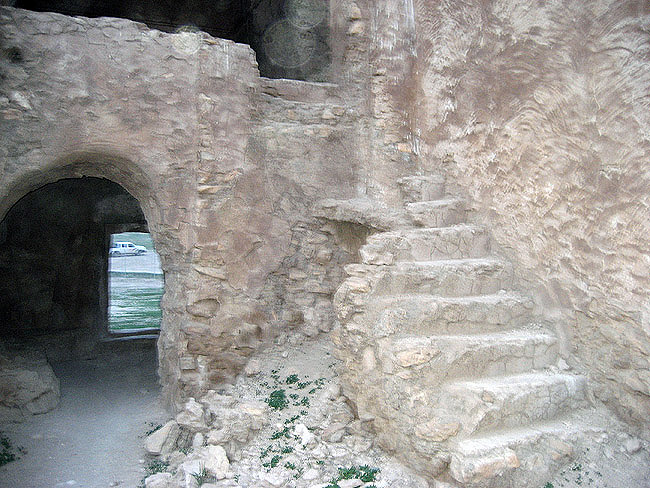
Here is a detailed photo looking into the entrance/foyer. The steps were a little broken down, but I read that they have been restored and can now be used. (I did not use them in fear of causing more damage to them.)
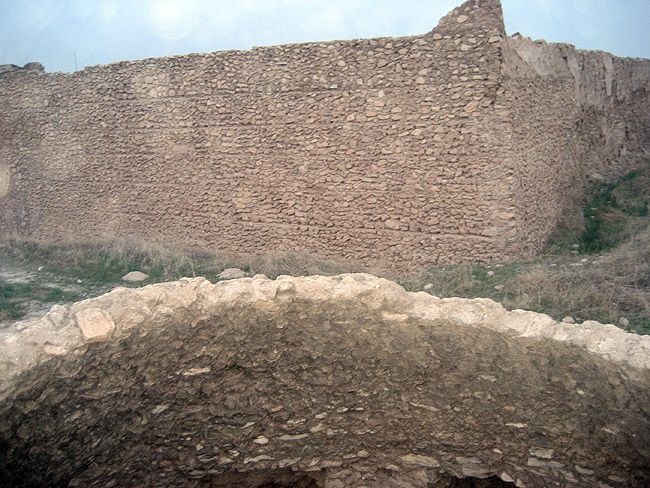
Here is a photo taken from outside the main monastery. There were mounds outside of the monastery that were pretty deep. I was told that more rooms and artifacts could be found if archaeologists did some digging in the mounds.
Here is a short video of the monastery. It is available in m4v for Macs.

Sometime between 2011 and 2014 the monastery was completely destroyed. See these before and after satellite images.

Some recommended online lectures and websites:
- The short wikipedia entry has some references and links.
- William Warda, “Early Assyrian Monasteries and Churches in Iraq”
- Bishabue, “St. Elia Monastery, Dair Mar Elia”, Zinda Magazine, March, 2006. www.zindamagazine.com/html/archives/2006/03.25.06/index_sat.php#literatus, Accessed 29 October 2011.
- Steve Walsh, “War Exposes History : Abandoned monastery near Mosul offers glimpse into area’s past”, Chicago Post Tribune, March 2005.